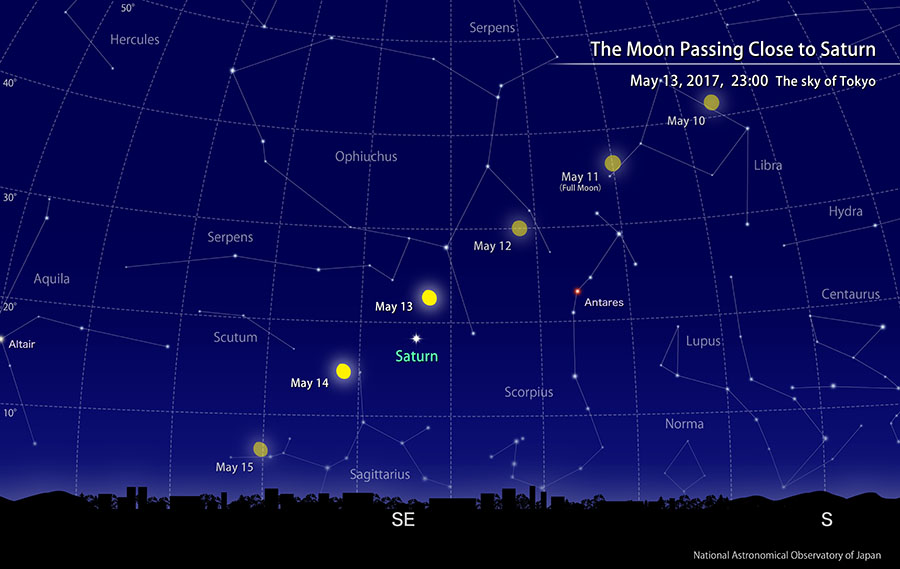The Moon Passing Close to Saturn (May, 2017)

A Time to Look for Saturn Using the Moon as a Guide
Saturn appears low in the southeastern sky before midnight.
Saturn reaches culmination around 3:00 in early May and 1:00 in late May.
On the 13th and 14th, the Moon, having passed full phase, appears to pass close to Saturn. Saturn is not as bright as Venus or Jupiter. Therefore, even though you can usually see Saturn, you might not realize that star is Saturn. On this occasion, let’s look for Saturn using the Moon as a guide.
Saturn shines below the Moon before midnight on the 13th. After that, the Moon gradually approaches close to Saturn over the next morning (the 14th), as the Moon and Saturn both move from the southeastern sky to the southwestern sky. If you have a chance to get up early, you might want to try looking for the Moon and Saturn, which have greatly changed their positions. After that, before midnight on the next night (the 14th), the Moon moves to the east (lower left) and Saturn appears on the upper right of the Moon.
Saturn might look very faint in the bright moonlight, but once you find it, if you look at Saturn again a few days after the Moon passed by it, you will see that Saturn is shining strongly compared to the stars that form the constellations.
Reference: Ephemeris Computation Office
You can look up the rising and setting times for the Sun and the Moon, and the phases of the Moon in the “Koyomi Station” of the NAOJ Ephemeris Computation Office. You can find the appearance of the Moon and planets as seen from a typical city under “Sky Viewer.”